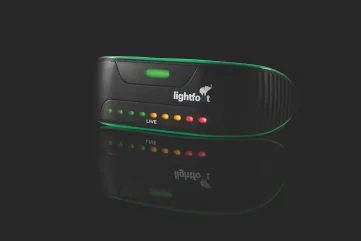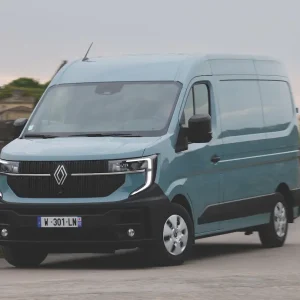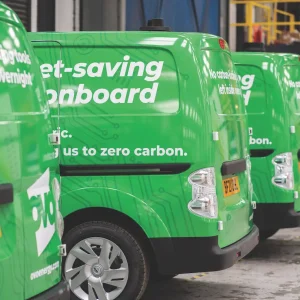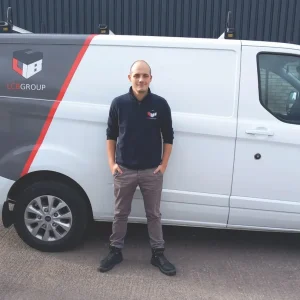
Educating drivers to drive with greater care and resist the temptation to speed not only leads to fewer and less-serious accidents, but employing a lighter touch on the accelerator cuts fuel consumption which in turn shrinks the operator’s carbon footprint and leads to fewer emissions of particulates and other harmful pollutants.
That is the stance taken by telematics specialist Lightfoot and it has created the telematics technology it offers with these benefits in mind. As a consequence we’re delighted to present it with our Green Telematics award for 2025.
What Lightfoot uses to benefit both drivers and operators is an in-cab coaching device delivering real-time feedback to whoever is at the wheel paired with a driver rewards app.
The former encourages drivers not to drive aggressively, and to stop accelerating and braking harshly when doing so is unnecessary; and that’s most of the time. The latter delivers rewards for more careful and considerate conduct on the highway.
Lightfoot says that the package it offers can cut CO2 emissions from petrol and diesel vehicles by an average 15%. A definite plus-point is its ability to put a stop to needless engine idling, with timed alerts reminding drivers to switch the engine off whenever possible.
Emissions of NOx (nitrogen oxides) from exhausts represent one of the leading causes of air pollution. Research from the University of Bath’s Institute of Advanced Automotive Propulsion Systems has found that Lightfoot’s driver coaching technology leads to a five-fold reduction in NOx produced by vehicles.
Cutting fuel usage means lower running costs, and a smoother driving style means less wear-and-tear on components; and replacing parts prematurely leads to extra expense. Smoother driving also means fewer non-exhaust emissions, typically particles from brakes and tyres that would otherwise be placed under increased stress; a growing cause of concern.
Never short of intelligent ideas, 2024 saw Lightfoot launch another new initiative; The Drivers’ Forest competition in conjunction with reforestation platform Evertreen.
Every week Lightfoot picks a driver who will have 100 trees planted in his or her name. The forest being created as a result is set to absorb over 12,000 tonnes of carbon emissions during its lifetime, the firm estimates.
In 2023 Lightfoot’s onboard technology helped its customers save 36,488
tonnes of CO2, it reports, equivalent to the amount absorbed by 1,737,523 trees annually.
In order to get the best out of van drivers Lightfoot does something that some employers might just view as dangerously radical. It empowers them.
The praiseworthy stance Lightfoot takes is best described in its own words.
“The key to unlocking sustainable driving is changing driver behaviour, and while many standard telematics products rely on a punitive approach to create change – which is often short-lived – Lightfoot was developed to deliver a wholly-new style of fleet management that empowers drivers through positive reinforcement,” it observes. “By rewarding drivers, results are sustained over time, and less-polluting driving becomes the norm.”
Lightfoot is of course not ignoring the introduction of electric vans. Its solution extends their range by a typical 15%, it says, and it has developed an electric vehicles platform.
Features include the management of driver reimbursement if vans are recharged from domestic charging points; live battery state-of-charge monitoring so operators can see which of their vans are available for work; reminders through the Lightfoot app to ensure that electric light commercials are kept charged up; and battery health reports.

Highly Commended: Bridgestone Mobility Solutions
Bridgestone Mobility Solutions wins the What Van? Highly Commended distinction for 2025 thanks to the January 2024 launch of what it says is the world’s first EV Services platform. It has been followed by further initiatives including the Webfleet EV Transition Tool, the Webfleet EV Charger Monitoring Solution, and the Webfleet AI Assistant.
The EV Services platform connects fleets with key service providers addressing areas such as charging hardware and software integration, smart charging solutions, energy management and advanced battery analytics. Suppliers active in the last-named area can trigger alerts if there is a problem with a battery, and provide reports on battery health.
The platform can also offer insights into how drivers behave when they are at the wheel of an electric van, and into energy consumption and overall fleet performance.





